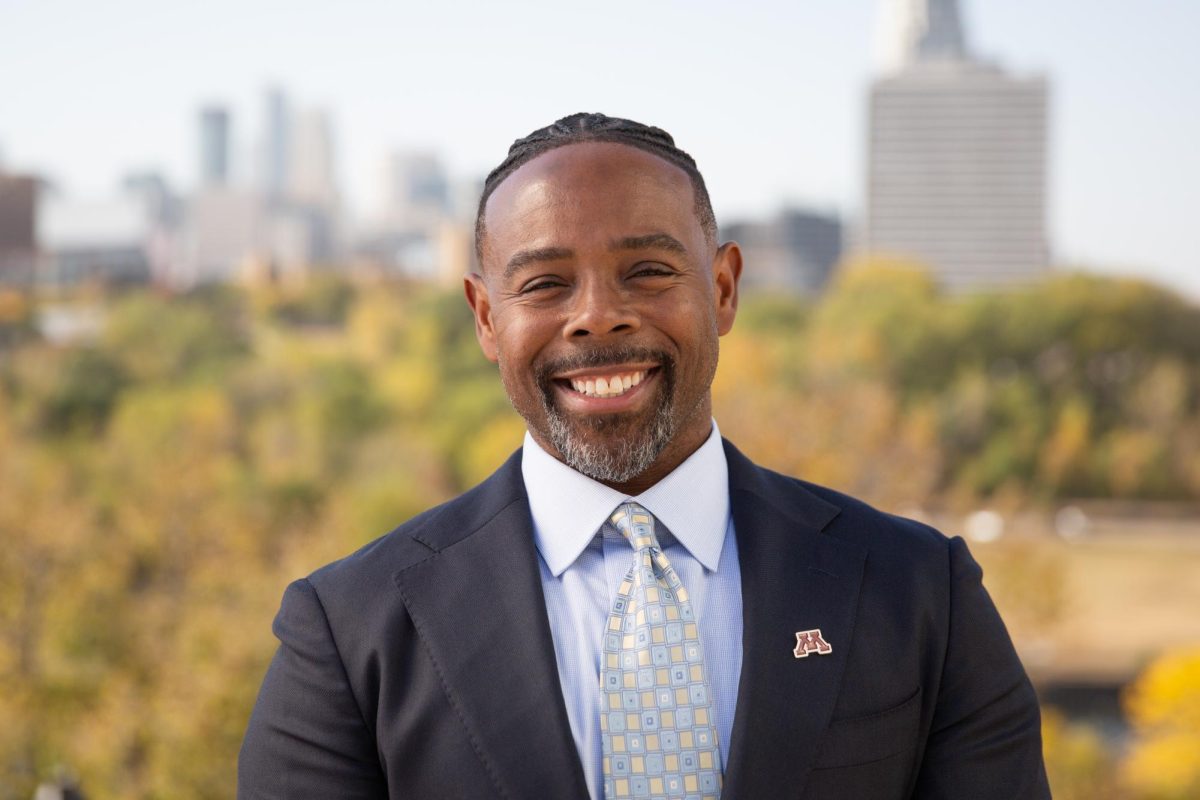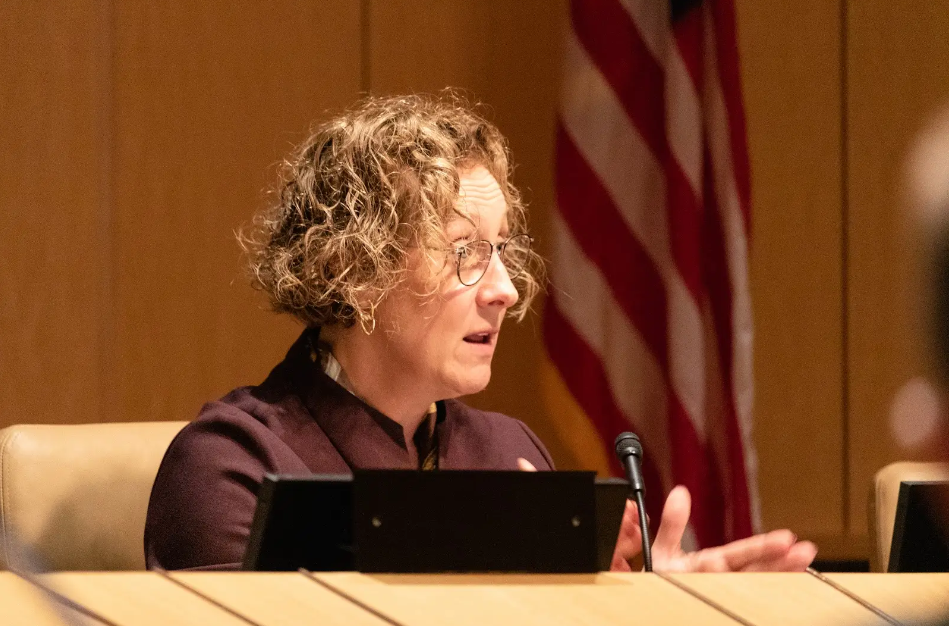The University of Minnesota St. Cloud CentraCare Regional Campus will begin instruction in fall 2025 with an initial cohort of 24 medical students, according to CentraCare’s website.
The campus was approved by the University’s Board of Regents in December 2023 to provide care to underserved communities, specifically rural and immigrant populations. St. Cloud, a metropolitan area, is surrounded by rural communities.
CentraCare is a health care system based out of Central Minnesota that employs almost 12,000 people. It runs nine hospitals and more than 30 clinics, according to its website.
CentraCare has a hospital and various specialty clinics located in St. Cloud and its surrounding areas.
Jill Amsberry, a pediatrician with CentraCare and assistant dean of undergraduate medical education at the St. Cloud regional campus, said the blended specialties between the University’s expertise in providing medical education and CentraCare’s expertise in the health care systems overall will affect the way students are taught.
“From the beginning, when students come for orientation, to the end of graduation and beyond into residency training, those two things are constantly intertwined,” Amsberry said. “You have this expertise from the health system and you have this expertise in medical education, and you bring those two things together to serve a geographic region, and in this instance, a specific population.”
Amsberry said there are many ways students can engage with CentraCare physicians, and it is already happening.
“We have done some pre-medical school workshops where CentraCare physicians have developed mentorship models or relationships with pre-med students in the region who are interested in coming to the campus,” Amsberry said.
The partnership between the St. Cloud regional campus and CentraCare encourages students to work in rural areas after graduating, Amsberry said. Students will get the opportunity to work in clinical environments in the area in and around St. Cloud to expose them to rural health care environments.
Rural communities and immigrant health
According to Executive Director of the Minnesota Rural Health Association (MRHA) Mark Jones, the barriers to health care many rural communities experience have been directly related to financial strains in recent years.
The primary concern MRHA has with financial strain is health care workforce shortages, which rural communities experience more extensively than any other area, Jones said.
Retention of health care providers and lack of infrastructure in rural areas is an issue, a Minnesota Department of Health report found. Of the 642 primary care clinics in the state, only 240 are in rural areas. The same disparity is present for specialty care clinics like pediatrics and gynecology, as rural Minnesota has only 196 of the 957 specialty care clinics in the state.
As a pediatrician, Amsberry said patients sometimes travel hours for appointments.
“Sometimes I have to tell (patients) that they need to go see a pediatric subspecialist because I’m a general pediatrician, and they have greater needs than what I can offer,” Amsberry said. “So then they have to travel another hour and a half down to the Twin Cities to see that pediatric subspecialist.”
According to the report, one in three rural health care providers plan to leave the field within the next five years. More than one in seven general practice doctors and one in five specialty physicians in Minnesota will reach retirement age in the next five years, according to a 2024 report by the Minnesota Hospital Association (MHA).
According to Jones, investing in education targeted at rural communities is the best way to combat workforce shortages, but prospective medical students growing up in rural areas may find difficulty deciding to go to school in urban environments that are so different from how they grew up.
Jones said he is optimistic that the St. Cloud regional campus can address concerns prospective medical students may have when considering medical school.
“We’ve proven time and time again that kids from rural communities will go back and work in rural communities, the best way to recruit is to grow your own,” Jones said. “To give rural residents an opportunity to learn in an environment that’s maybe more comfortable to them, that they can relate to, I think that’s fantastic.”
Dr. Shailey Prasad, the associate vice president for Global and Rural Health in the Office of Academic Clinical Affairs at the University, said the St. Cloud regional campus will focus on showing students the benefits of rural settings.
”I was a rural doctor in Mississippi for about 10 years and I can tell you, there is an energy, a blending with the community,” Prasad said. “That’s a unique benefit that you see in rural areas.”
According to Prasad, Minnesota will need 1,300 more physicians in rural areas to keep up with current demand by 2030, not accounting for potential population growth. Prasad said this obvious need makes the University and CentraCare’s combined efforts even more pivotal to ensure equal access to care throughout the state.
The increase of rural physicians through the St. Cloud campus could have positive implications for surrounding communities, Prasad said.
Drishti Pillai, the director of Immigrant Health and associate director of Racial Equity and Health Policy at KFF Health News, said immigrants, particularly undocumented immigrants, struggle to access health care.
“Undocumented immigrants are not eligible for any federally funded coverage,” Pillai said. “And most immigrants who are lawfully present, including green card holders, have to wait at least five years before they can access federal coverage options like Medicaid.”
About half of adult immigrants report having limited English proficiency, which further exacerbates the struggles immigrant communities face when seeking medical care, Pillai said.
With an increasing number of immigrants moving to rural areas of Minnesota, Prasad said it is important that prospective physicians are trained to be informed about their needs and how they may differ from other Minnesotans.
“As a provider, having that cultural humility to reach across to the person in front of you, to understand what their understanding is of disease processes, what their belief systems are, to understand what we can do to gain trust and offer health services is a very critical point to keep in mind here,” Prasad said.
Looking to the future
The St. Cloud regional campus is intent on giving students opportunities to go out and work in rural communities from the start, according to Amsberry.
“We have plans to send our students out into the rural communities for clinical exposure in their very first year of medical education so that they can not only learn right away what it’s like to work in a rural setting, but they can learn what it’s like to be a rural physician,” Amsberry said.
As the St. Cloud regional campus begins instruction, the University and CentraCare will monitor the program’s success, Amsberry said. They plan to track the retention of students who continue to work in rural areas during and after residency, as well as chronic disease rates and other prevalent health statistics to evaluate the medical school’s broader impact on the community.
Prasad said he wants the St. Cloud regional campus to become a catalyst for change, beyond just being a singular medical school.
Since the campus will prioritize recruiting candidates from rural areas, Prasad said he hopes this will create a more accessible environment and pathway to medical school for prospective students.
According to Prasad, the University is in the process of designing residency slots in the areas surrounding the St. Cloud regional campus so students will be able to continue their training in rural areas after graduation.
Despite the difficulties in health care accessibility facing rural communities, Jones said recent findings in the MHA report point toward promising trends.
The MHA report noted that job vacancies among nurses have been significantly declining for the first time since the COVID-19 pandemic. The vacancy rate in 2021 was roughly 6%, spiking to 16% in 2021 during the height of the pandemic, but has now dropped to 13% in 2024.
The number of working nurses also grew for the fifth straight year.
Although he is hopeful for the future, Jones said change still needs to be made in order to make health care accessible for every community in Minnesota.
“We can’t start celebrating yet, there’s still a lot of work to do,” Jones said. “The more rural you become, the more inequitable it becomes. We don’t want to take anything away from anyone else, we just want to make (health care) accessible to everyone.”
Correction: The headline misstated the campus would begin construction in 2025. It will begin instruction in 2025.














JB
Oct 18, 2024 at 2:26 pm
I’m not entirely comfortable with the U partnering with a Catholic hospital system at this level, and hope that doesn’t place any limitations on what’s taught to those students.